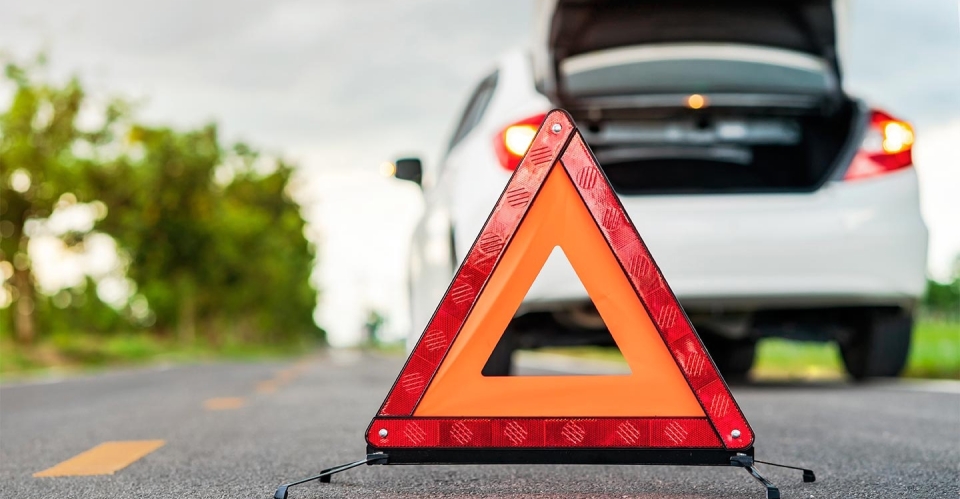
Being prepared for roadside emergencies can make a significant difference in how smoothly you handle unexpected vehicle issues. Carrying the right tools and supplies in your car can help you manage various situations, from a flat tire to a dead battery. Here’s a comprehensive list of essential tools every driver should carry to ensure you’re ready for any roadside emergency.
1. Spare Tire and Jack
- Spare Tire: Ensure your spare tire is in good condition and properly inflated. A spare tire can be a lifesaver if you experience a flat tire.
- Jack: A jack is necessary for lifting your vehicle to change a flat tire. Make sure the jack is suitable for your vehicle's weight and has been tested for safety.
2. Lug Wrench
- Lug Wrench: This tool is used to remove and tighten lug nuts on your wheels. A lug wrench with a cross-shaped design or a telescoping handle can provide better leverage and make the job easier.
3. Jumper Cables
- Jumper Cables: These are essential for jump-starting a dead battery. Make sure the cables are long enough to reach another vehicle’s battery and have good insulation to prevent short circuits.
4. Portable Battery Charger
- Portable Battery Charger: A portable battery charger or jump starter pack is a great backup to jumper cables. It allows you to jump-start your battery without needing another vehicle.
5. First-Aid Kit
- First-Aid Kit: A well-stocked first-aid kit is crucial for treating minor injuries until professional help arrives. Include items like bandages, antiseptic wipes, adhesive tape, tweezers, and a basic first-aid manual.
6. Flashlight and Extra Batteries
- Flashlight: A flashlight is invaluable for inspecting your vehicle and signaling for help in low-light conditions. Choose a durable, high-quality flashlight.
- Extra Batteries: Carry extra batteries to ensure your flashlight remains operational when needed.
7. Tire Changing Tools
- Tire Iron: In addition to the lug wrench, a tire iron can help loosen and tighten stubborn lug nuts.
- Tire Pressure Gauge: Regularly check your tire pressure to avoid issues. A gauge helps you ensure your tires are properly inflated.
8. Emergency Roadside Kit
- Roadside Flares or Warning Triangles: These items help alert other drivers to your presence and enhance safety, especially at night or in poor visibility conditions.
- Reflective Vest: A reflective vest increases your visibility to other drivers when you’re working on your vehicle or waiting for help.
9. Multi-Tool or Basic Toolkit
- Multi-Tool: A multi-tool with pliers, screwdrivers, and a knife can be handy for various tasks, from fixing minor issues to cutting through materials.
- Basic Toolkit: A small toolkit with essential tools like screwdrivers, pliers, and wrenches can be useful for minor repairs or adjustments.
10. Water and Non-Perishable Snacks
- Water: Carry bottled water to stay hydrated, especially during long trips or if you’re stranded for an extended period.
- Non-Perishable Snacks: Pack snacks like granola bars or nuts to keep your energy up if you’re waiting for assistance.
11. Emergency Blanket
- Emergency Blanket: A compact, thermal emergency blanket can help keep you warm in cold conditions or if you’re waiting for a long time.
12. Fire Extinguisher
- Fire Extinguisher: A small, automotive fire extinguisher can be crucial in case of a fire, whether from a vehicle malfunction or an accident.
13. Ice Scraper and Snow Brush
- Ice Scraper: If you live in an area with cold weather, an ice scraper helps remove frost and ice from your windshield.
- Snow Brush: A snow brush helps clear snow from your vehicle’s windows and mirrors for better visibility.
14. Duct Tape and Basic Repair Supplies
- Duct Tape: Duct tape is incredibly versatile for temporary fixes, such as securing loose parts or sealing small leaks.
- Basic Repair Supplies: Consider carrying items like zip ties, a roll of electrical tape, and a small tube of adhesive.
Conclusion
Carrying essential tools for roadside emergencies can help you handle unexpected situations effectively and safely. By equipping your vehicle with these tools and supplies, you’ll be better prepared to manage issues such as flat tires, dead batteries, and other common roadside problems. Regularly check and maintain your emergency kit to ensure all items are in good working condition and ready when you need them. Being prepared not only enhances your safety but also provides peace of mind while driving.